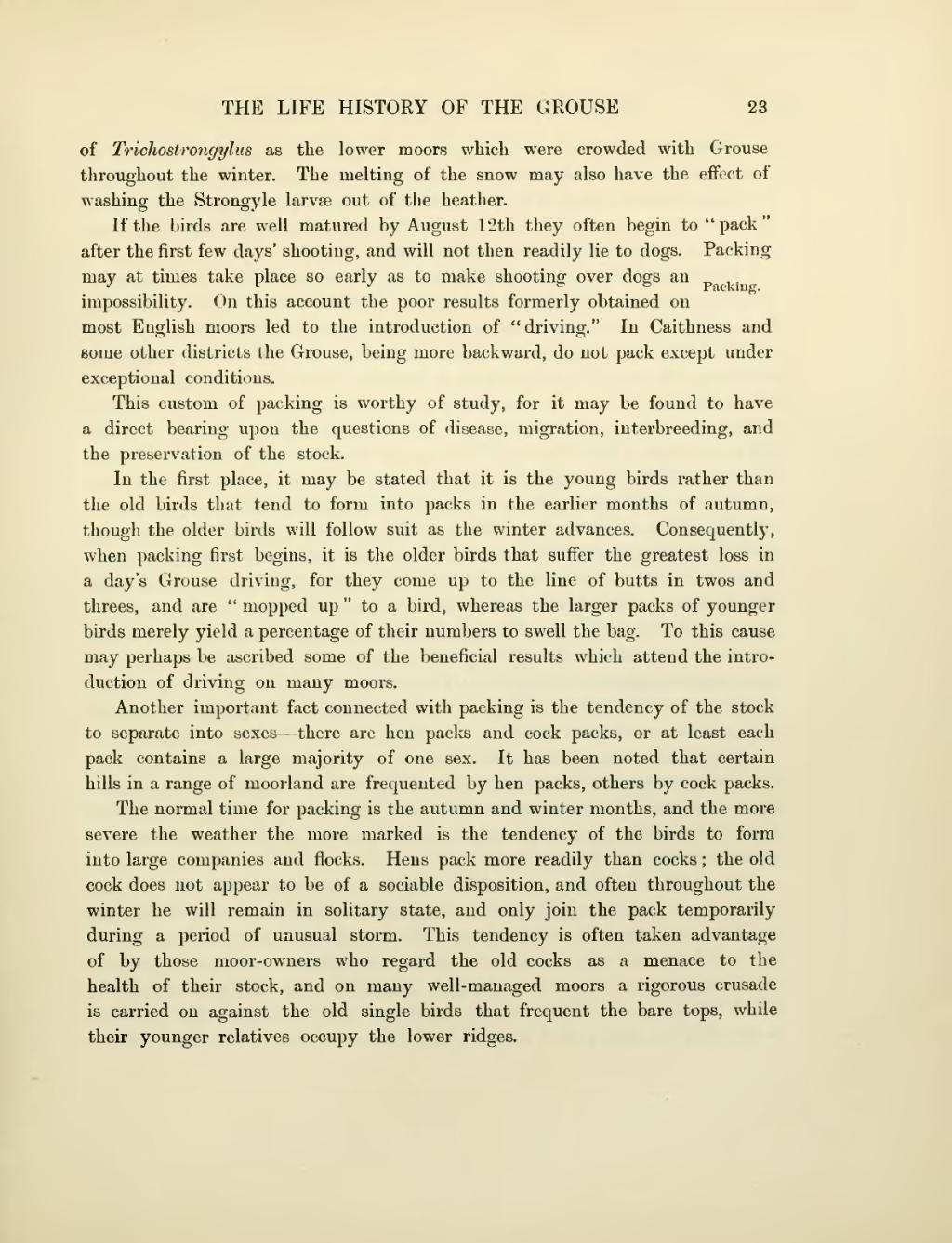of Trichostrongylus as the lower moors which were crowded with Grouse throughout the winter. The melting of the snow may also have the effect of washing the Strongyle larvae out of the heather.
If the birds are well matured by August 12th they often begin to "pack" after the first few days' shooting, and will not then readily lie to dogs. Packing may at times take place so early as to make shooting over dogs an Packing. impossibility. On this account the poor results formerly obtained on most English moors led to the introduction of "driving." In Caithness and some other districts the Grouse, being more backward, do not pack except under exceptional conditions.
This custom of packing is worthy of study, for it may be found to have a direct bearing upon the questions of disease, migration, interbreeding, and the preservation of stock.
In the first place, it may be stated that it is the young birds rather than the old birds that tend to form into packs in the earlier months of autumn, though the older birds will follow suit as the winter advances. Consequently, when packing first begins, it is the older birds that suffer the greatest loss in a day's Grouse driving, for they come up to the line of butts in twos and threes, and are "mopped up" to a bird, whereas the larger packs of younger birds merely yield a percentage of their numbers to swell the bag. To this cause may perhaps be ascribed some of the beneficial results which attend the introduction of driving on many moors. Another important fact connected with packing is the tendency of the stock to separate into sexes — there are hen packs and cock packs, or at least each pack contains a large majority of one sex. It has been noted that certain hills in a range of moorland are frequented by hen packs, others by cock packs.
The normal time for packing is the autumn and winter months, and the more severe the weather the more marked is the tendency of the birds to form into large companies and flocks. Hens pack more readily than cocks; the old cock does not appear to be of a sociable disposition, and often throughout the winter he will remain in solitary state, and only join the pack temporarily during a period of unusual storm. This tendency is often taken advantage of by those moor-owners who regard the old cocks as a menace to the health of their stock, and on many well-managed moors a rigorous crusade is carried on against the old single birds that frequent the bare tops, while their younger relatives occupy the lower ridges.

